The purpose of this study was to find out what experiences pre-service physical education teachers have before, during and after student teaching along with teacher educational meanings in the experiences. The subjects of this study were 7 senior students in department of physical education of B university located in A city. The data were collected through daily records of student teaching and in-depth interview(group and individual). The collected data were analyzed using the methods of Smith & Kinsella(2009) and Spradley(1980). The analysis showed expectation for learning(knowledge, skills, behavior) and realization(feeling, stimulation, awareness) before student teaching, fight and compromise with 'me'(body, spirit, life), 'you'(teacher, student) and 'it'(instruction, environment, episode) during student teaching, and regret of 'instruction'(plan, execution, evaluation), 'relationship'(forming, maintaining, improving) and 'role'(teacher, attitude, sense of calling) after student teaching. These characteristics were discussed in 4 aspects of educational meanings including seeking essence, seeking forms, seeking roles and seeking status. Lastly, the study suggested unification of student teaching contents, introduction of exclusive teacher system for student teaching, establishment of evaluation system for student teaching program and development of field ability strengthening program available to connect with student teaching in physical education.
There has been a growing advocacy for a critical approach to physical education teacher education(PETE) in the era of globalization and ubiquitous society. Drawing on critical pedagogy, the purpose of this paper was to explore the meanings and methods for developing critical professionalism in PETE through identifying the definitions and features of critical professionalism. The notion of critical professionalism includes four crucial components: critical reflection, social sensitivity, critical thinking, and practicability. This paper suggests an inquiry-oriented physical education teacher education to develop per-service teachers’ critical professionalism in terms of providing a range of teaching methods centered on microteaching, discussion-based lessons, critical reading and writing, and using media materials. Building on findings, it was concluded that there is a need of programs for the development of policy literacy understanding complex social and cultural contexts of school physical education. Furthermore, PETE should focus on the processes of critical reflection on the teaching and learning act itself within wider social contexts, by using an inquiry-oriented approach to PETE, which will contribute to fostering teachers’ critical capacities needed to guard the educational aims of physical education against political interference.
PURPOSE This study aimed to explore the effective and pragmatic idea regarding the development of physical education teacher education (PETE) programs in China. These programs share both similarities and differences in China and Korea, and they are also discussed here. METHODS Six universities reflecting the regional specificities of Korea and China were selected following consultation with experts. Data collected through in-depth interviews, non-participatory observation, literature, and local documents were analyzed and interpreted by using the comparative analysis research method. RESULTS First, when comparing the curriculum, which was divided into liberal arts, major, and teaching subjects in both countries, the ratio of liberal arts and teaching subjects was similar in Korea following major subjects. As for China, major subjects came in first, followed by liberal arts and teaching subjects. Second, the relative pros and cons of preliminary sports teacher education in Korea and China were aimed at nurturing competent sports experts with both expertise and personality. They were generally similar in terms of content dimensions; however, they were found to be different in several areas. Particularly in the case of China regarding the teaching subject, practical subjects that were of pragmatic help to the school field were found to be relatively insufficient. Third, the implications for improving China's preliminary PETE were to emphasize the importance of personality in educational goals at the goal level, and as for the content level, it was necessary to replaced them with classes that could be of pragmatic use in the existing teaching method. Furthermore, at the methodological level, professional training of physical education teachers should be proposed, training them to cultivate character. Finally, more positive changes can be pursued if efforts at the environmental level are well-matched and improved. CONCLUSIONS To improve China's preliminary PETE program, it is necessary to enhance the environment and institutions using various teaching methods to cultivate expertise, such as practical aspects of university-field linkage and preliminary teacher personality education.
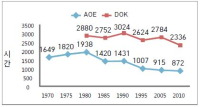
The aim of this study is to examine the directions of Physical Education Teacher Education (PETE) programs in Korea through the historical changes of each one PETE institute in England and Korea from the 1970s to 2010s based on academicisation. Document analysis and grounded theory were used to analyse historical sources and interviews. I identify four findings. First, the amounts of hours in curricula in both PETE courses have been reduced. Second, discipline knowledge in England was a first priority in the 1970s but has urgently reduced since the 1980s because of the growth and adoption of sport pedagogy. In Korea, discipline knowledge has still kept as a first priority for 40 years. However, professional knowledge in Korea has increased to enhance PETE since the middle of 2000s. Third, teaching experiences in England has increased by nearly double from 15 weeks to 32 weeks. In Korea, student have, and continue to participate in only four weeks of teaching experience. Fourth, education studies in England abolished in the 1990s. In Korea, they urgently increased in 2009. I conclude by confirming the need to study a structure and content of units of discipline knowledge and professional knowledge. I propose a system for selection of majors in the Department of Physical Education.

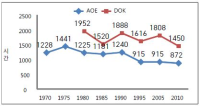
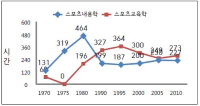
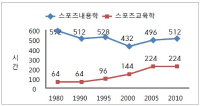
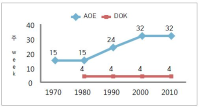
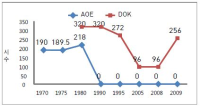
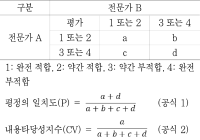
Purpose Common content knowledge(CCK) is composed of rules, techniques, and tactics. Such knowledge is a requirement for effective teaching of physical education (PE). There are, however, few validated tests of CCK. Thus, the purpose of this study was to develop a CCK test of soccer and evaluate the validity and reliability of the test using Rasch modeling (Rasch, 1980). Methods We developed thirty item common content knowledge test for soccer. Then, we used Rasch modeling to evaluate the validity and reliability of a test of soccer. Pre-service teachers (N=92) majoring in physical education and non-PE major (N=111) participated in this study. Results Thirty questions demonstrated good item-model fit. Moderately high internal consistency for person-ability and high internal consistency for item-difficulty are reported. Both Infit and Outfit statistics showed a good fit between the data and the Rasch model. Conclusions The analysis provides evidence to support the validity and reliability of this instrument as a CCK test of soccer. Limitations of the study were discussed and suggestions were provided to improve the test.

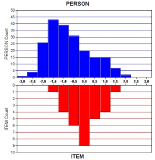
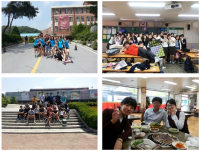
Purpose This study tells about my life about the past time when I studied for the teacher certification examination, using autoethnography. Methods It primarily used personal memories and diaries. The collected data was analyzed by applying longitudinal coding method through technical categories. Results The finding of this study is described in a chronological order as follows. The first part is about my unstable ego formed in my puberty period just like riding a roller coaster. It mainly features the process of choosing a career path when I was in school and the important starting point that made me today. The second part describes about my life after entering the department of physical education. I joined the military only to flee from a fruitless college life where I was wearing an unbefitting mask to hide myself from the world that is completely beyond my control. In the military, I was lucky to realize how to apply my major to set up my career path by coincidence. The third part is about the process of finding a genuine meaning of being a physical education teacher through a transitional period experienced after returning to school and form a stable self. Lastly, passing teacher certification examination with undaunted struggles boosted my self-esteem and self-efficacy and solidified my self-identity in the end. In addition, it is possible to get a glimpse of the attitudes that teachers need to have for a teaching career in the last part. Conclusions What I want to say throughout my descriptive story is that preparing for the teacher certification examination itself is a great challenge as well as a courageous decision for the candidates, but it is an attainable goal if they try with all their heart.


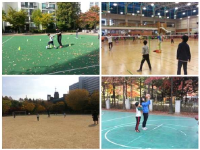
Purpose The purposes of this study were to examine the influence of a formal sports mentoring program on mentors(pre-service PE teachers), and to identify main factors affecting educational growth of the pre-service teachers. Methods Data were generated in this study using: In-depth interviews, mentoring observations, and document resources from 4 mentors and their mentees as research participants. The collected data were inductively analyzed as an iterative process of working back and forth between the data and the categories(Miles & Huberman, 1994). Results The key findings of this study are as follows. First, mentors developed pre-service teachers’ practical knowledge including teaching knowledge, environment knowledge, student knowledge within teaching contexts. Furthermore, they practiced mentee-centered education through sports mentoring not only by mentees but also for mentees. Second, with respect to the factors impacting mentors’ educational growth, there were two main factors; the systematic structure of a program and mentors’ reflexivity. Mentors improved practical knowledge through the circular ‘experiential learning’ phases the sports mentoring program provided. In addition, mentor had valuable opportunities to learn how to care mentees by reflecting on positive and negative influences deriving from interactions with their mentees. Conclusion Potential benefits were embedded in inherent nature of sport and the unique structure of mentoring. sports mentoring can provide experience of learner-friendly teaching distinct from classes of lecture type. It is necessary to be reconsidered as pre-service PE teacher education program with opportunities of other teaching practice.

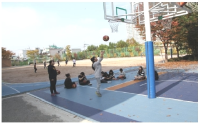


Drawing on the studies of implicit ways of teaching (Choi, 2002; Fenstermacher, 1990; Hasen, 2001; Oakeshott, 1989; van Manen, 1991), the aim of this study is to examine the educational effects of indirect teaching behavior (ITB), a new approach of researching teacher behavior, in order to better understand well-rounded education in the field of physical education. An ethnographically informed case study based on participant observation (eight months, 8th grade two co-ed physical education classes) was employed to produce a thick description of the ITB. Participant observation was supported by video recordings of classes, photos of students, questionnaires and interview, and teacher's self-report. Through inductive analysis of the data, we found that ITB had a powerful influence on forming a positive classroom atmosphere in relation to fun, active and moral. The positive atmosphere played a pivotal role in encouraging students' social and moral development including respecting their teacher, cooperating with other friends, learning the intrinsic value of physical education, and reflecting themselves. An understanding of ITB will help expand the way in which educators view teaching methods and studies in physical education beyond the dominant approach to techniques-oriented teaching in that ITB can be seen as essential content for holistic development of students. In this sense, this paper suggested that researchers and teacher educators need to re-examine the power of ITB in regard to teacher's professional competence in physical education and teacher education (PETE). For future research of ITB, it is necessary to explore what and how key personal and social-cultural factors impact teachers' ITB as is currently being conducted in the realm of teaching.
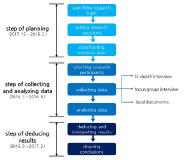
[Purpose] The purpose of this study was to explore the formation process and influential factors of professional identity for the establishment and growth of physical education(PE) teachers majoring in dance. [Methods] Based on the phenomenological research method, data from the interviews, focus group interviews, and local document were collected and analyzed from ten teachers. [Results] First, we explored the process of professional identity formation of PE teachers majoring in dance. It appeared in four stages, 'stranger,' 'adaptation,' 'settler,' and 'pioneer.' Second, we explored the factors of forming the professional identity of the PE teachers majoring in dance. The factors influencing the process of identity formation from the stranger to the adaptation were 'utilization of various training' and 'imitation of their mentor.' The factors influencing the formation process of identity formation from the adaptation to the settler were 'recognition and support of fellow teachers' and ‘opportunity of professional development.’ The factors influencing the process of identity formation from the settler to the pioneer are ‘sense of commitment as a PE teacher,’ ’constant attitude of study and learning.’ [Conclusion] The results suggest that the formation of professional identity of PE teachers majoring in dance goes through a certain stage, and the environment is important as well as the active effort and potential attitude of individual.


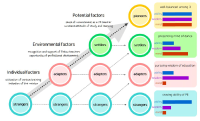
PURPOSE Professional Identity Formation (PIF) has become a core concept in various professional education fields as it emphasizes professionals’ dispositions as well as abilities. This study provides an overview of PIF and explores the characteristics of professional education programs that highlight PIF. Through this overview, the purpose of this study is to propose the ‘Professional Identity Matrix for Physical Education Teacher (PIMPET)’, which helps identify PE teachers’ Professional Identity (PI). METHODS This study suggests a guideline to understand PE teachers' PI based on the analysis of the current literature on PI and PIF. RESULTS The characteristics of PIF-based professional education programs were described according to three criteria: teaching content, method, and assessment. On the PIMPET framework, the components of PI formed by PE teachers can be categorized into nine domains which encompass the three identity dimensions (competence, knowledge, and disposition) and the three task areas (teaching, student, and administration). CONCLUSIONS The PIMPET framework allows for a comprehensive understanding of PE teachers’ PI and provides implications for the professionalism of PE teachers and PE teacher education.